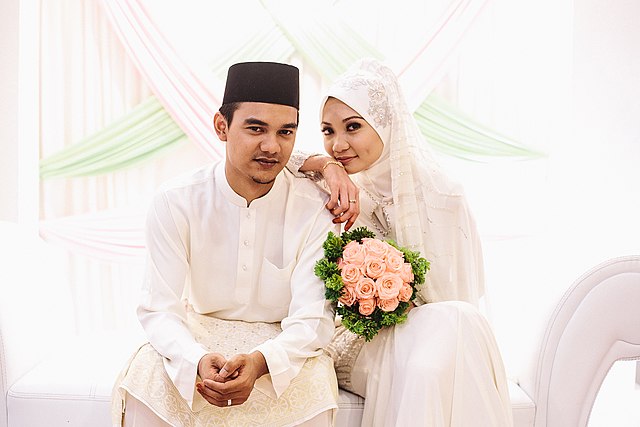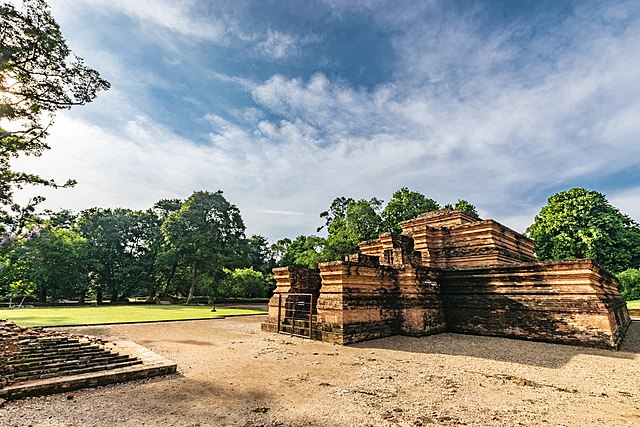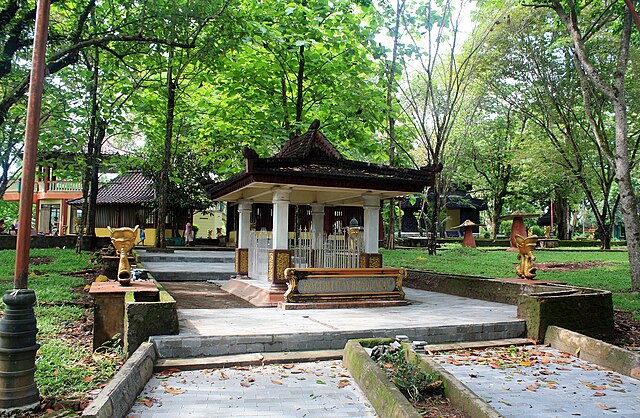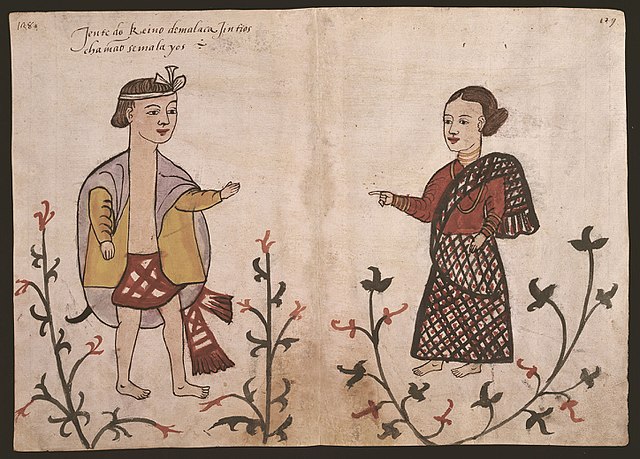The term Proto-Malay, primeval Malays, proto-Hesperonesians, first-wave Hesperonesians or primeval Hesperonesians, which translates to Melayu Asli or Melayu Purba or Melayu Tua, refers to Austronesian speakers who moved from mainland Asia, to the Malay Peninsula and Malay Archipelago in a long series of migrations between 2500 and 1500 BC, before that of the Deutero-Malays about a thousand years later. The Proto-Malays are descendants of the first humans living in Southeast Asia, and are "ancestral" for humans in east Asia and the Americas.
A group of Proto-Malay Aboriginal people in Behrang, Perak, Malaysia, 1906.
Houses of Proto-Malays near Lubuk Kelubi, Hulu Langat District, Selangor, Malaysia, 1908.
A comparison of height with an American (left), a mixed blood of Native Indonesians and Proto-Malay (middle) and a pure Negrito (right) from Northern Luzon, 1869.
Malays are an Austronesian ethnoreligious group native to eastern Sumatra, the Malay Peninsula and coastal Borneo, as well as the smaller islands that lie between these locations. These locations are today part of the countries of Malaysia, Indonesia, the southern part of Thailand, Singapore and Brunei Darussalam.
A Malay couple in traditional attire after their akad nikah (marriage solemnisation) ceremony. The groom is wearing a baju melayu paired with songkok and songket, while the bride wears baju kurung with a tudong.
Muaro Jambi Temple Compounds in Jambi, historically linked to the pre-Islamic Melayu Kingdom. The Melayu-Srivijayans were known to construct complex building system in its capital, major cities and important urban centres.
Bukit Seguntang in Palembang. According to Sejarah Melayu, the hill recorded the advent of Sang Sapurba, a legendary progenitor for various Malay royal houses in Sumatra, Malay Peninsula and Borneo.
Portuguese watercolour of Malayan people of Malacca, circa 1540, featured in the Códice Casanatense







